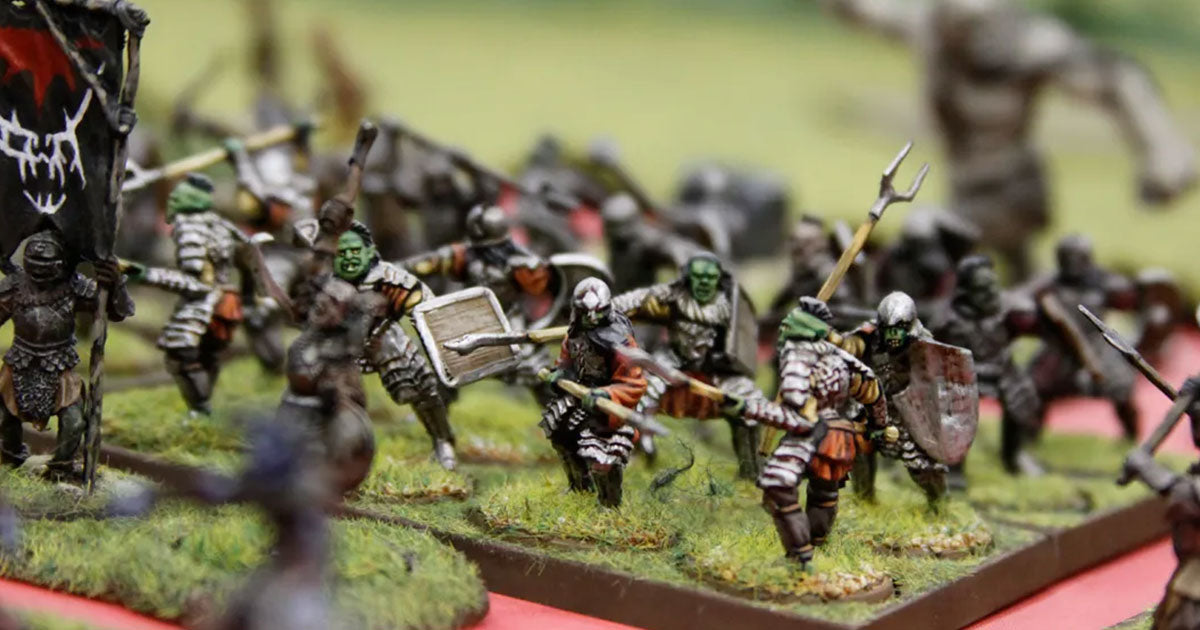The Role of Separately Sold Miniature Parts in Customising Your Wargame Figures
Unleash your creativity with endless personalisation options for your tabletop armies
Wargaming transcends mere tabletop battles to become a genuine artistic endeavour, where customisation serves as the cornerstone of creating distinctive miniatures that command attention on the battlefield. While standard model kits provide an excellent foundation, separately sold miniature parts unlock boundless creative possibilities, enabling enthusiasts to individualise their figures with unique weapons, heads, armour, and accessories that truly reflect their vision. At Hearns Hobbies, we're passionate about helping wargamers transform ordinary armies into extraordinary forces that tell their own stories through carefully crafted details and personalised elements.
| Miniature Parts Customisation at a Glance | |
|---|---|
| Component Types | Heads, bodies, weapons, accessories, miniature bases |
| Key Materials | Plastic, resin, metal, 3D-printed components |
| Customisation Benefits | Unique army identity, game strategy enhancement, narrative storytelling, hobby satisfaction |
| Techniques | Kitbashing, conversion, green stuff sculpting, precision assembly |
The Importance of Customisation in Wargaming
Customisation stands as the beating heart of wargaming culture, transforming mass-produced miniatures into personal works of art with rich histories and distinctive identities. The practice of modifying figures can be traced back to the 18th century, when Prussian military strategists utilised wooden miniatures to simulate battlefield tactics and formations. These humble beginnings have evolved dramatically over centuries, culminating in today's highly detailed and infinitely customisable tabletop gaming figures that enthusiasts cherish and personalise with meticulous attention to detail.
Contemporary industry titans like Games Workshop have firmly established customisation as an essential aspect of popular systems such as Warhammer and Warhammer 40,000, where the diversity of units and factions encourages hobbyists to explore creative modifications. With the advent of separately sold body parts and weapons, wargamers are no longer constrained by standard-issue models—kitbashing (the art of combining components from different kits) has become a celebrated technique for crafting truly unique armies that stand apart on the battlefield and in display cabinets alike.
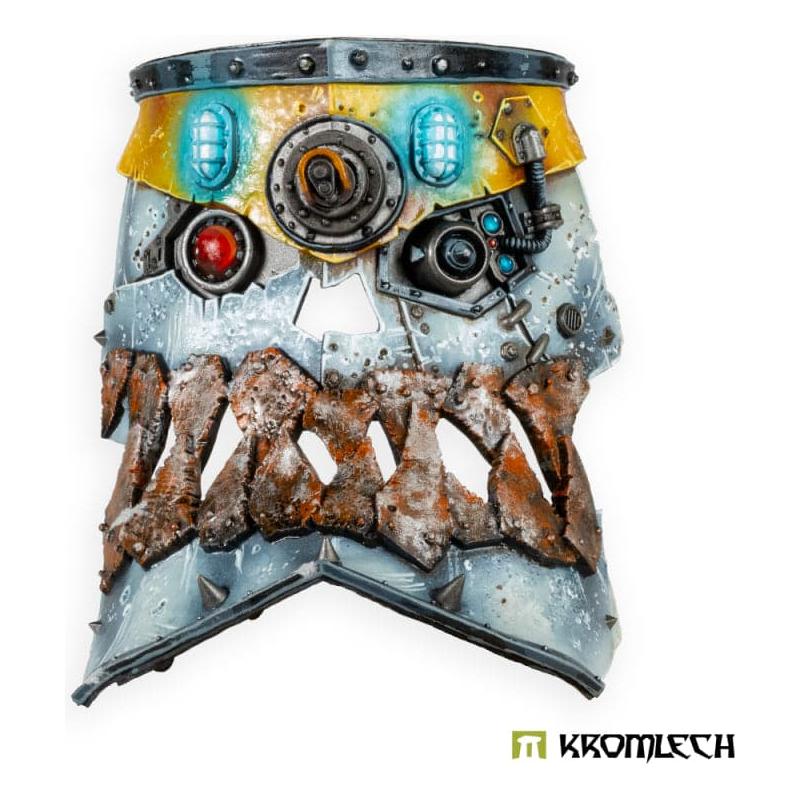
Custom Orc Skull Mask - Perfect for creating distinctive character models
Beyond aesthetic considerations, customisation serves practical gameplay purposes that enhance the strategic depth of tabletop warfare. Distinct visual modifications make it significantly easier to identify specific units during large-scale battles, allowing players to quickly recognise squad leaders, special weapons carriers, or characters amidst the chaotic melee of miniature combat. This functional advantage combines with the narrative satisfaction of fielding a truly personal force, where each customised figure contributes to the army's unique story and visual theme.
The psychological rewards of customisation cannot be overstated—there's a profound sense of accomplishment in transforming basic components into something extraordinary through skilful modification and creative vision. Many wargamers report that the hobby's most gratifying moments come not from victories on the tabletop, but from the admiring glances and compliments their custom creations receive from fellow enthusiasts. This social dimension reinforces customisation as a cornerstone of the wargaming community, where sharing techniques and showcasing unique modifications fosters connections between hobbyists across the globe.
Ready to personalise your forces? Explore our extensive selection of heads, body parts, and weapons to create truly unique miniatures that will dominate the battlefield and captivate onlookers.
Materials and Manufacturing of Miniature Parts
The evolution of materials used in miniature production has dramatically expanded the possibilities for customisation, with each medium offering distinct advantages for the discerning wargamer. Traditional materials continue to coexist alongside cutting-edge options, providing hobbyists with unprecedented flexibility in how they approach their customisation projects and determine the durability, detail level, and workability of their chosen components.
| Material | Characteristics | Ideal Usage |
|---|---|---|
| Plastic | Lightweight, durable, and affordable, modern injection-moulded plastic captures impressive detail while remaining easy to modify with basic hobby tools. | Core armies, extensive kitbashing projects, beginner customisation |
| Resin | Superior detail reproduction with crisp, fine features, though more brittle and requiring careful handling during assembly and transport. | Character models, elite units, highly detailed custom parts |
| Metal | Exceptional durability and weight, providing a premium feel and resistance to damage, albeit with more challenging modification requirements. | Centrepiece models, collectible figures, gaming pieces that see frequent handling |
| 3D-Printed Materials | Varied characteristics depending on printing technology (SLA, FDM, etc.), offering unprecedented customisation potential and access to unique designs. | Bespoke custom parts, prototype designs, limited-run components |
The manufacturing processes behind these materials have evolved dramatically in recent years, with digital sculpting and computer-aided design revolutionising how miniature parts are conceptualised and produced. Traditional hand-sculpting techniques, once the industry standard, have largely given way to digital workflows that allow for previously impossible levels of precision and consistency across production runs. This technological advancement has democratised the creation process, enabling smaller manufacturers and independent artists to produce high-quality heads, weapons, and accessories that rival those from major studios.
The advent of affordable desktop 3D printing has perhaps been the most transformative development in miniature customisation, creating an entirely new ecosystem where designers share and sell digital files that hobbyists can materialise at home. This technological revolution has exponentially expanded the range of available components, with websites like Cults3D, Thingiverse, and MyMiniFactory hosting thousands of downloadable designs for bases, conversion bits, and complete alternative models that would have been unimaginable just a decade ago.
Material Selection Tip:
When selecting materials for your custom parts, consider how they'll integrate with your existing collection. Plastic parts bond best with plastic miniatures using plastic cement, while superglue works better for attaching metal or resin components. Always test-fit pieces before committing to permanent adhesion, and consider using modelling putty to smooth transitions between different materials.
Types of Separately Sold Miniature Parts
The diversity of separately sold miniature parts has expanded dramatically in recent years, offering wargaming enthusiasts an unprecedented array of options for personalising their armies. From subtle modifications to complete character transformations, these specialised components enable hobbyists to craft truly distinctive forces that stand apart on the tabletop battlefield whilst expressing their creative vision and tactical preferences in exquisite detail.
Understanding the full spectrum of available parts is essential for any serious hobbyist looking to elevate their collection beyond standard-issue models. Each component category serves specific customisation purposes and opens unique aesthetic and narrative possibilities that can transform ordinary units into extraordinary centrepieces with compelling visual stories and gameplay implications.
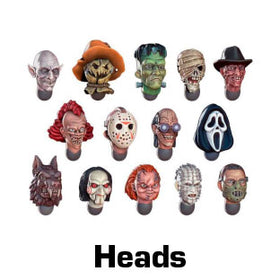
Specialised heads for character customisation
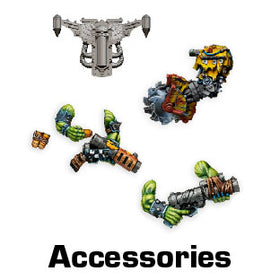
Accessories and detailing components for added character
The transformative potential of character heads cannot be overstated—these focal components instantly alter a miniature's identity and emotional impact. A simple head swap can convert a generic trooper into a battle-hardened veteran, a fearsome commander, or a unique hero with distinctive facial features that tell their own story. Many hobbyists maintain extensive collections of heads with various helmets, expressions, and racial characteristics to ensure each figure in their army possesses a unique visual identity that contributes to the force's overall narrative and aesthetic cohesion.
Beyond heads, weapons represent perhaps the most frequently customised elements, allowing players to accurately represent special loadouts for gaming purposes whilst creating visually striking focal points. The practical advantages of weapon customisation extend beyond aesthetics—many wargaming systems have specific rules for different armaments, making it essential to clearly represent specialised equipment on the tabletop. Collection-specific weapon styles also reinforce army themes, whether that means rustic blades for historical forces, sleek energy weapons for sci-fi legions, or primitive implements for fantasy warbands.
| Essential Customisation Components | ||
|---|---|---|
| Component | Customisation Impact | Practical Considerations |
| Heads | Defines character identity, expression, and race/faction alignment | Check neck joint compatibility; may require pinning for heavier options |
| Body Parts | Establishes posture, bulk, and overall silhouette | Consider scale consistency across different manufacturers |
| Weapons | Indicates unit role, combat specialisation, and technological level | Ensure rules compliance for tournament play; may affect base footprint |
| Miniature Bases | Creates environmental context and elevates overall presentation | Maintain regulation size for competitive play; consider display cohesion |
| Accessories | Adds personality touches through banners, pouches, trophies, etc. | Avoid overcrowding; focus on meaningful details that enhance narrative |
Body modifications extend beyond simple component swaps to include dynamic posing adjustments that inject movement and life into otherwise static figures. Experienced modellers often reposition limbs, bend torsos, and adjust head angles to create natural-looking interactions between models or to depict specific actions like charging, firing, or defending. These subtle alterations dramatically enhance the cinematic quality of dioramas and gaming tables, transforming rigid plastic armies into fluid battlefield tableaux that capture the imagination and tell compelling visual stories without a single word.
Techniques for Seamless Customisation
Achieving professional-quality customisations requires both technical skill and artistic vision, with successful modellers developing systematic approaches that ensure consistent results across their collections. The foundation of effective customisation begins with proper preparation and planning—sketching concepts, gathering appropriate tools, and test-fitting components before committing to permanent modifications saves considerable time and prevents potentially costly mistakes with rare or expensive parts.
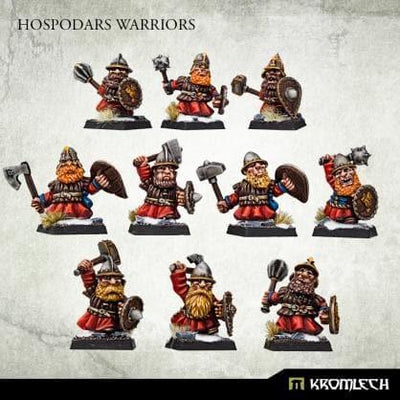
Professional assembly and customisation creates cohesive warrior units
Precision cutting forms the bedrock of component integration, with experienced modellers relying on sharp hobby knives, fine-toothed saws, and specialist clippers to achieve clean separations without damaging delicate details. The judicious application of heat can make rigid plastic more pliable for repositioning, whilst cold water baths can quickly set modified components in their new positions. For seamless joins between disparate parts, gap-filling adhesives and modelling putties like Green Stuff or Milliput prove invaluable, allowing hobbyists to blend connections and sculpt transitional elements that disguise the boundaries between original and custom components.
Essential Tools Tip:
Invest in quality modelling tools for precise customisation work. A sharp hobby knife with replaceable blades, fine-tipped tweezers, needle files of various shapes, and a pin vice with assorted drill bits form the core toolkit for serious conversion projects. For seamless joins, consider adding a quality instant bond adhesive with an accelerator spray to your arsenal, allowing for rapid but controlled assembly of complex multi-part modifications.
Magnetisation represents one of the most versatile advanced techniques, allowing hobbyists to create interchangeable weapon systems and removable components that adapt to different gaming scenarios. By carefully drilling socket holes and embedding rare-earth magnets in strategic locations, modellers can develop highly flexible miniatures that transform to represent various unit types or equipment loadouts without requiring completely separate models. This approach proves particularly valuable for expensive character models or vehicle kits where multiple configuration options exist within game rules but purchasing separate models for each variant would be prohibitively expensive.
The pinnacle of customisation skill manifests in scratch-building—the creation of entirely new components using basic materials like plasticard, wire, and epoxy putty. Veteran hobbyists often fabricate unique elements that don't exist in commercial form, from specialised weapons and bespoke armour plates to environmental details that enhance bases and dioramas. This level of craftsmanship transforms good armies into exceptional ones, imbuing them with truly unique elements that cannot be replicated through standard kitbashing alone.
Painting and Weathering Techniques
The artistic journey of customisation extends well beyond physical modification into the realm of colour and texture, where painting transforms assembled components into cohesive, lifelike miniatures with visual depth and character. Establishing a unified painting scheme across customised units presents unique challenges, as disparate parts may feature different levels of detail or surface textures that require thoughtful approaches to achieve visual harmony throughout the collection.
Professional-quality results begin with thorough preparation—washing components in mild detergent removes mould release agents that can prevent paint adhesion, while primer application creates a uniform foundation that enhances colour vibrancy and durability. Many experienced painters employ zenithal priming techniques, applying black primer as a base coat followed by directional white or grey oversprays that naturally highlight raised areas and create subtle pre-shading that guides subsequent colour application and enhances three-dimensional depth perception.
Beyond basic colour application, weathering techniques breathe life and realism into customised miniatures by simulating the effects of environment and use. Subtle applications of rust effects, mud splatter, dust accumulation, and battle damage transform pristine models into battle-hardened veterans with compelling visual narratives. These techniques prove particularly effective for unifying diverse customised components, as the strategic application of weathering can disguise different material textures and blend conversion seams into natural-looking battle damage or environmental wear.
Community and the Growing Culture of Customisation
The wargaming community has embraced customisation as a fundamental aspect of the hobby, with social media platforms, forums, and local gaming groups serving as vibrant showcases for creative innovations and technical breakthroughs. Platforms like Instagram and dedicated hobby sites feature thousands of showcased conversions daily, inspiring fellow enthusiasts and establishing evolving standards of craftsmanship that continually push the boundaries of what's possible with miniature customisation.
Competitive painting and modelling competitions have further elevated customisation from personal hobby to recognised art form, with major gaming conventions hosting highly contested display categories specifically for converted miniatures and scratch-built elements. These events not only celebrate exceptional creativity but also facilitate knowledge exchange through workshops and demonstrations where veteran modellers share techniques with enthusiastic newcomers, ensuring the preservation and evolution of specialised skills that might otherwise remain obscure or limited to professional model makers.
The commercial landscape has responded to this customisation renaissance, with numerous small manufacturers and independent artists developing specialised parts designed specifically for compatibility with popular game systems. This symbiotic relationship between hobbyists and producers has created a thriving ecosystem where consumer demand drives innovation in part design, while creative applications of these components inspire further product development in an ongoing cycle of creative evolution that benefits the entire wargaming community.
Online marketplaces dedicated to miniature parts have transformed accessibility, allowing hobbyists to source specific components from around the world without needing to purchase entire kits for single elements. This democratisation of access has dramatically lowered the barriers to entry for serious customisation, enabling newcomers to experiment with high-quality conversions without significant investment whilst providing veteran modellers with unprecedented variety for their ambitious projects. At Hearns Hobbies, we're proud to offer an extensive range of these specialised components to support hobbyists at every skill level.
Join the thriving customisation community by exploring our comprehensive selection of miniature bases, weapons, and heads. Share your creations with fellow enthusiasts and discover endless inspiration for your next project.
Frequently Asked Questions
What are the best starter parts for customising miniatures?
For beginners, we recommend starting with weapons and heads as they offer dramatic visual impact with relatively simple assembly. These components typically require minimal modification and can be attached with standard plastic cement or superglue. Focus on parts compatible with your existing miniature range to ensure proper fit and scale before progressing to more complex conversions involving multiple components or extensive modification.
How do I ensure different materials work together in conversions?
When combining different materials:
- Use the appropriate adhesive for each material combination (plastic cement for plastic-to-plastic, cyanoacrylate/superglue for metal, resin, or mixed materials)
- Create mechanical connections with pins for heavier parts or weak joining points
- Use modelling putty to create smooth transitions between different materials
- Apply a consistent primer across all components to unify surface texture before painting
- Consider scale consistency between different manufacturers when selecting components
Are customised miniatures tournament legal?
Tournament legality varies by event and game system, but generally follows these guidelines:
- Miniatures must be clearly identifiable as the unit they represent
- Weapons and equipment should accurately reflect the options chosen in your army list
- Base sizes must match the official requirements for the unit type
- Conversions should not provide gameplay advantages (like making models taller to see over terrain)
- All major components should be from the game manufacturer or officially licensed third parties
Always check specific tournament guidelines before entering with heavily customised models, and consider having the original options available if questioned. For competitive play, focus on weapons and heads that clearly communicate your unit's battlefield role.
How do I achieve cohesive themes across customised units?
To maintain visual unity across customised units:
- Establish a consistent colour palette that reinforces your army theme
- Repeat distinctive elements (helmet styles, shoulder pads, banner symbols) across multiple units
- Use miniature bases with cohesive environmental themes
- Apply consistent weathering techniques that tell a unified story about your force's experiences
- Create a background narrative that explains visual variations within your collection
Remember that subtle variations actually enhance realism, but should exist within a recognizable visual framework that identifies your force as a cohesive whole.
What tools are essential for effective miniature customisation?
A comprehensive model tools collection for customisation should include:
- Fine-tipped hobby knife with replacement blades
- Precision sprue cutters for clean component removal
- Pin vice with assorted micro drill bits (0.5mm-2mm)
- Fine-grained files and sanding sticks for smoothing surfaces
- Assorted sculpting tools for applying and shaping putty
- Tweezers and needle-nosed pliers for handling small parts
- Various adhesives suitable for different materials
- Modelling putty for gap-filling and custom sculpting
Investing in quality tools will significantly improve your customisation results and make the process more enjoyable.
Conclusion
The art of miniature customisation represents the perfect intersection of creativity, technical skill, and strategic thinking that makes wargaming such a uniquely rewarding hobby. By incorporating separately sold body parts, weapons, and heads into your modelling repertoire, you unlock limitless possibilities for creating distinctive forces that truly reflect your personal aesthetic and narrative vision.
Beyond the visual impact, customisation deepens your connection to your collection, transforming mass-produced models into personal creations with stories and characters that resonate on a deeper level. Each conversion decision—from weapon choices to pose adjustments—contributes to a unique battlefield presence that distinguishes your forces from others and creates memorable gaming experiences for you and your opponents alike.
Final Thoughts:
Whether you're a competitive player seeking to optimize unit recognition, a narrative enthusiast crafting visual stories, or an artistic hobbyist pushing the boundaries of miniature modification, the world of separately sold parts offers tools and components to elevate your wargaming experience. Start small with simple head swaps or weapon changes, then gradually expand your skills toward more ambitious conversions. Remember that every master converter began with a single modification—your journey into the limitless realm of customisation begins with just one creative change.
 is here! Shop now, pay later in 4 easy installments
is here! Shop now, pay later in 4 easy installments

